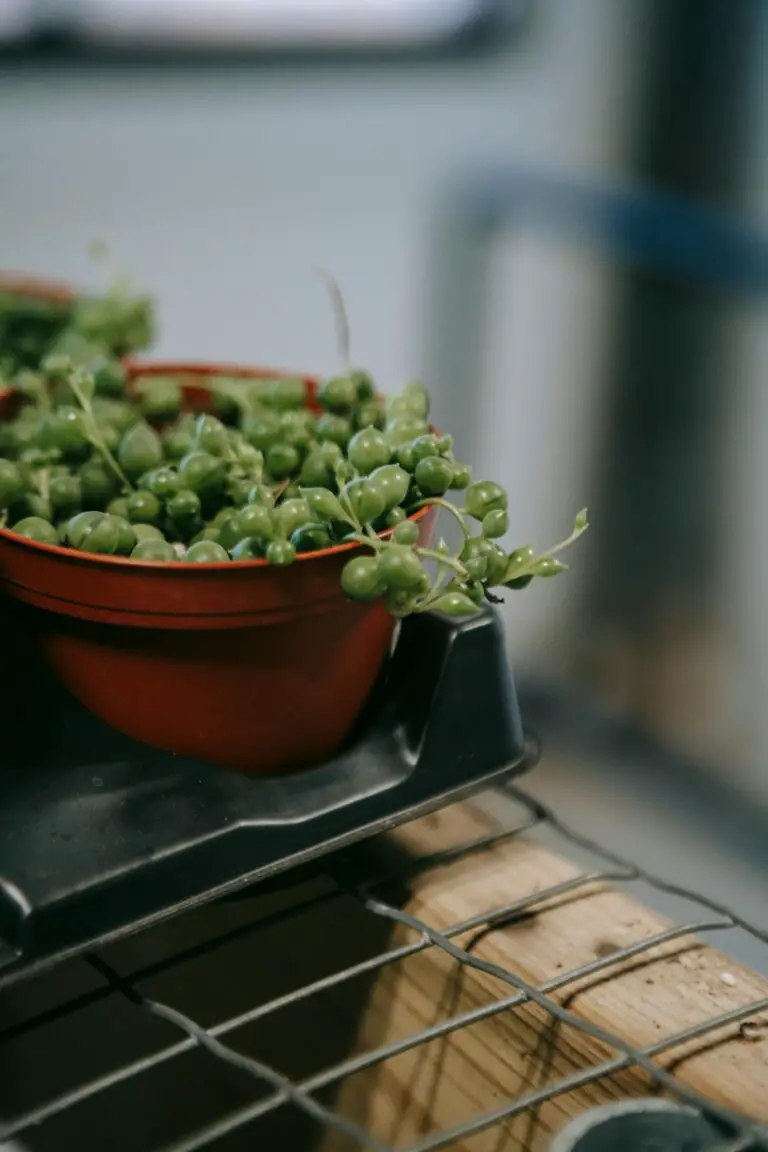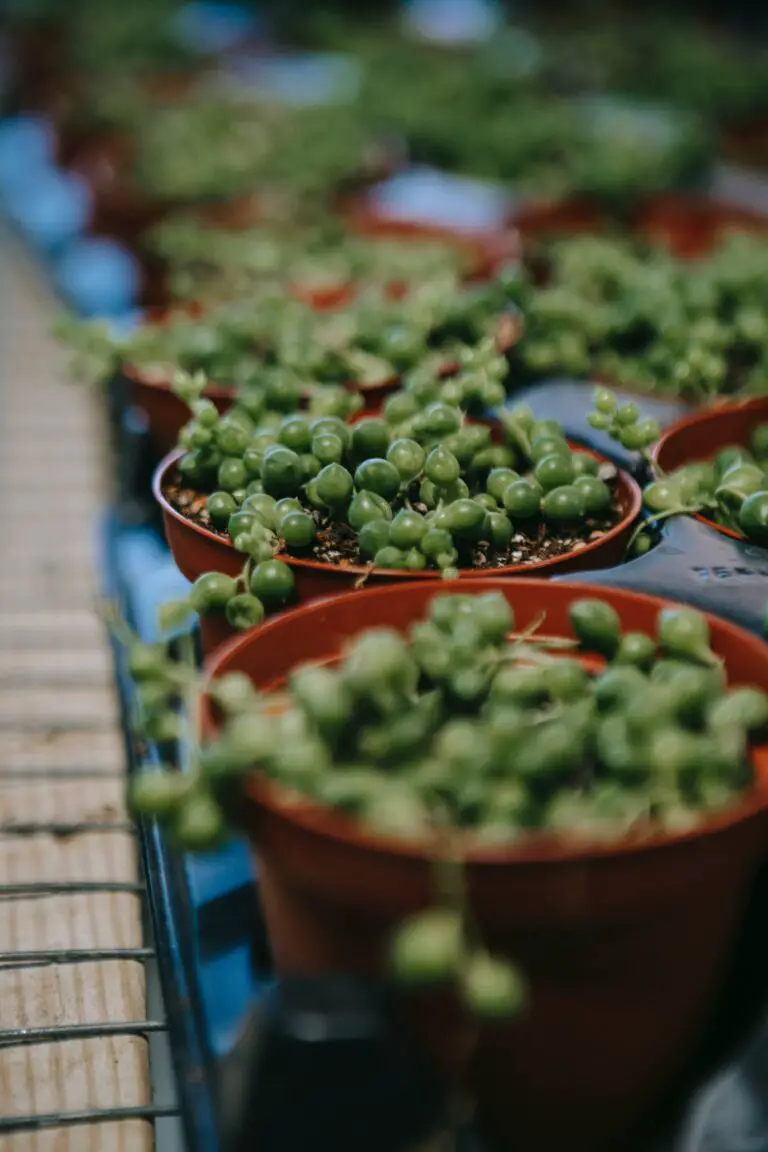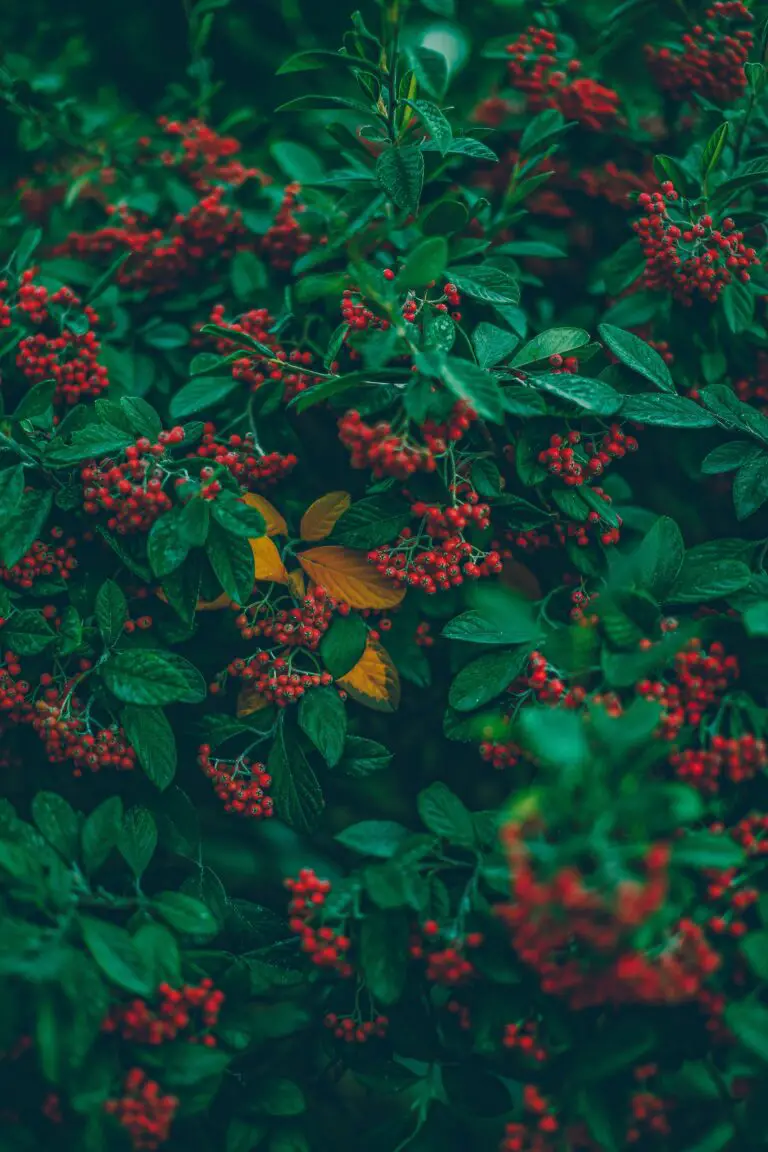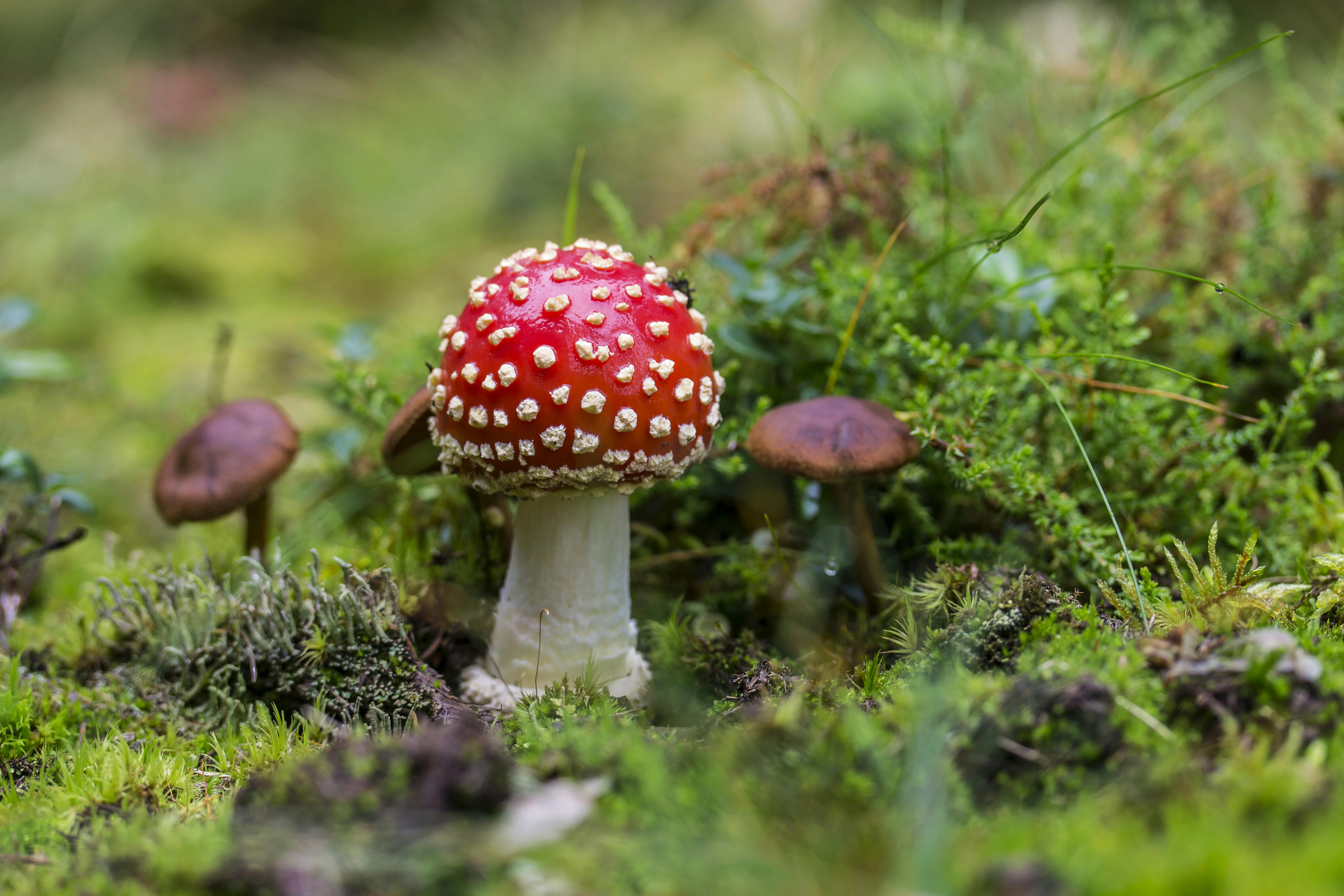Introduction to Senecio Macroglossus: Nature’s Paragon of Lush
Embark on an exploration of a verdurous gem – Senecio macroglossus. In the verdant realms of nature’s tapestry, this perennial vine, charmingly referred to as Wax Ivy or Natal Ivy, asserts its presence. Adorning many a garden with its lively emerald shades and ivy-like appearance, this succulent climbs and cascades with grace, inviting onlookers into its lush embrace.
Native to the southern contours of Africa, where it spontaneously adorns rocky ledges and forest margins, Senecio macroglossus thrives in environments that mimic its indigenous, balmy habitats. The vine prospers in bright, filtered light – an echo of the dappled sunlight piercing through a verdant forest canopy. It’s here, in the temperate clime, that its waxy, heart-shaped leaves unfold like a storybook of the wild.
Couple this plant’s adaptability with the distinctive charm of its leaves, which bear a striking resemblance to those of the common English Ivy, despite their far-off relation, and you’ve got a stellar botanic spectacle. Indeed, this mimicry is a whisper of the marvels of nature, showcasing an evolutionary artistry that leaves enthusiasts and casual admirers alike in awe.
What truly sets Senecio macroglossus apart is its capability to bring a touch of the wilderness into our urban dwellings. It asks for so little – a spot with ample light and a little care – and in return, it cascades over shelves, dangles gracefully from hanging baskets, or climbs effortlessly against a trellis, transforming living spaces into vibrant green oases. Discover more about nurturing these indoor succulent sanctuaries and their endearing aesthetics.
As Senecio macroglossus basks in the warmth of a setting sun, its vine adorned with tender yellow blossoms, one cannot help but ponder the simple, understated beauty it contributes to our lives. This section has barely brushed the surface; there’s so much more to learn and admire about this botanical wonderment.

Mastering Wax Ivy Care: Key Requirements for Thriving Plants
If you’re eyeing that spot in your home where the sunlight drapes like a spotlight, you might have just found ‘the spot’ for your lovable Senecio Macroglossus. But before you let it take the stage, let’s rewind and chat about what turns this wallflower into the belle of the ball. Growing a thriving Wax Ivy isn’t just about sticking it in soil and hoping for the best—it’s about understanding its likes and dislikes, almost like matchmaking!
Starting with light—imagine the dappled shade of a forest floor; that’s what your green buddy digs. A location with bright, indirect light is perfect. Direct sunlight? Let’s just call that the arch-nemesis, too harsh for those delicate, variegated leaves, capable of causing more drama than a summer romance gone bad.
When it comes to hydration, your Wax Ivy prefers its soil on the dry side—a succulent of sorts, storing water in its leaves. Water it thoroughly but infrequently, allowing the soil to dry out between waterings, just like you would for other succulent varieties. Think of it as your plant’s ‘me time’—a period to soak up nutrients without drowning in affection.
Soil: The Foundation of Health
Soil for your Senecio Macroglossus isn’t just a medium—it’s a lifeline. Opt for a well-draining, succulent-specific mix that will hug its roots with just enough warmth while preventing any soppy conditions. And temperature? Let’s keep it cozy, between 65-75°F (18-24°C), steering clear of drafts that could send chills down its stems.
Here’s a little sneak-peek into the life of a flourishing Wax Ivy, thanks to an insightful video guide. It’s all about providing that tender, loving care that nudges this resilient charmer to sprout tendrils that could rival Rapunzel’s locks.
Paying attention to these key requirements will ensure your Senecio Macroglossus doesn’t just survive, but thrives, becoming a radiant example of nature’s splendor in your home. So, let’s keep the conversation going, nurturing your green companion to be the envy of every plant parent on the block!
Designing with Senecio: Creative Uses in Home and Garden
The versatility of Senecio macroglossus, commonly known as Wax Ivy, can breathe new life into your living quarters and garden areas. As a groundcover or a climber, it infuses spaces with its unique texture and vibrant foliage. But how do you get started? Let’s explore potential designs that can transform ordinary areas into charming green retreats!

Indoor Hanging Gardens – Picture cascading vines of Wax Ivy tumbling from ceiling-mounted planters, framing a sunny kitchen window, or creating a natural partition in an open layout home. This approach not only maximizes your space but also adds an air of sophistication to your decor. Learn more about the care and cultivation to ensure your hanging garden thrives.
Living Walls and Vertical Spaces – A living tapestry can be crafted using Senecio’s climbing ability. By guiding its tendrils up wireframes or trellises, you can create lush, green backdrops that serve as focal points in both indoor and outdoor settings. This vibrant barrier not only beautifies your space but also enhances the air quality around you.
Succulent Groundcover – Create a sea of green by letting Wax Ivy spread across your garden beds. This groundcover strategy is perfect for filling in gaps and suppresses weed growth, thereby decreasing maintenance time. Combine it with other succulents to fashion a tapestry of textures and hues that bring depth and interest to your landscape design.
There you have it! From cascading foliage indoors to vibrant groundcovers outdoors, Senecio macroglossus is a designer’s ally. Try these ideas to bring an element of sophistication or a burst of nature into your spaces. With a bit of creativity, the design possibilities are as limitless as your imagination!
Propagation Perfection: How to Multiply Your Wax Ivy Collection
For plant enthusiasts, the thrill of propagation is like discovering a secret garden—an opportunity to create an abundance of green from a single specimen. Senecio Macroglossus, commonly known as Wax Ivy, is a charismatic climber that lends itself wonderfully to propagation. A real-life example? Think of that friend who effortlessly pinches a stem from her flourishing Wax Ivy, and in due time, it bursts into a cascade of hearty vines. Let’s walk through the steps to replicate that magic in your own space.
Before we delve into the “how,” imagine this: a small cutting from your Wax Ivy, no bigger than a pencil, could someday twine gracefully around your reading nook. It’s not just a plant; it’s a future companion growing alongside your daily life. Now, let’s ensure that tiny cutting reaches its full potential.
The first step in propagation is to select a healthy stem. Look for one with robust leaves and a confident stature; this will be the pioneer of your new plant colony. A crisp snip just below a leaf node, and your journey begins. Remember, it’s not just a stem; it’s the seed of your future green haven.
Next, you need to remove the lower leaves to expose a clean length of stem. This will be the part that roots in the soil or water. Think of it as preparing a diving board for your Wax Ivy to leap confidently into its new home.

For rooting, you have options. Some prefer the traditional soil route, nestling the stem into a moist, nurturing environment. Others swear by water propagation, placing the stem in a transparent vessel where roots emerge like ethereal threads. Whether you’re a soil supporter or a water worshipper, the goal is the same: to see the first hints of root growth signal the start of something new.
Regardless of your rooting choice, patience here is a practice. It might take days or even weeks, but when those tentative roots make their appearance, it’s a moment of pure alchemy. Yes, your efforts can turn plant cuttings into beautiful, vine-laden miracles!
After the roots are ready, it’s time to transplant your cuttings into their own pots—think of it as their graduation ceremony into plant adulthood. A well-draining pot with a peat-based mix cradles your Wax Ivy, and just like that, you’ve multiplied your collection. It’s a simple, yet profoundly magical, process.
Now, keep a watchful eye as your new Wax Ivy plant adjusts and starts to grow. Small victories, like a new leaf, deserve celebration. Remember, you’re not just growing plants; you’re curating a living, breathing art gallery within your home. Water, sunlight, and love are your tools; Wax Ivy, your canvas.
Let each propagation journey remind you of nature’s resilience and your role in weaving the tapestry of life. Your hands possess the power to create an oasis, one Wax Ivy at a time. So take that small cutting and dream big. The splendor of your urban jungle awaits.
Seasonal Senecio Care: Adjusting to the Rhythms of Nature
As gardeners, we often speak of plants as if they were static, unchanging entities—but the truth is, they’re anything but. Take the enchanting Senecio macroglossus, or Wax Ivy, as we fondly call it. This vibrant climber thrives throughout the year, adapting itself deftly to the seasons’ ever-shifting tides. To see our wax ivies flourish, we must embrace their natural cycles, adjusting our care to harmonize with the rhythm of nature’s drum.
Spring unfurls its tender shoots and with it, our Senecio stirs from its wintry slumber. As the sunlight strengthens, so too should our vigilance. Watering can gradually increase, echoing the plant’s awakening thirst. Now’s the time to feed, to bolster the Wax Ivy’s growth spurt with a balanced fertilizer. Think of it as the morning coffee that kickstarts a day—vital for a vigorous start.
But then comes summer, the zenith of light and life. Our Senecio basks in the long days—except when it doesn’t. Too much of a good thing can be troublesome, so we provide a canopy of care, shading our fronds from the scorching midday sun. Watering reaches its peak in synchrony with the plant’s growth, but take heed—overindulgence leads to soggy roots and the displeasure of our green friend.
Autumn whispers the approach of rest. We dial back the water, let the soil dry more between drinks. Nutrition support wanes; the Senecio needs less as its growth slows. It’s the gradual deceleration, a soft lullaby coaxing the plant into dormancy. Yet it is not a time of neglect; the senescent leaves must be pruned, shaping and preparing the vine for its winter repose.
And in the hibernation of winter, our care is a gentle presence. Watering is spare, only to sustain, not to spur. It’s the quiet watchfulness over a sleeping child—we’re there, but unobtrusive, allowing the Senecio to rest and restore. This dormancy isn’t death; it’s the restorative silence that precedes the opus of spring’s return.
Through real-life observations, we’ve learned that our care must be both timely and tempered, always attuned to the unspoken needs of our Senecio macroglossus. It’s an art form, a delicate dance between human and plant, each step a testament to the bond we share with our leafy companions.
And so we adjust, we attune, and in doing so, we and our Senecios thrive together—bound by the silent music of the earth’s rotations and the wax ivy’s sweet, silent serenade. Below is a snapshot that perfectly captures the essence of our verdant muse:

Understanding the seasonal intricacies of Senecio care is essential—not just for the plant’s survival, but for its vivacious vigor. With each passing season, embrace the shift, cater to the cues, and watch as the Wax Ivy spins its green tapestry, splendidly adorning our lives with its quiet, yet unmistakable charm.
Combatting Common Culprits: Pests and Diseases in Wax Ivy
Wax Ivy, known scientifically as Senecio Macroglossus, is a striking and low-maintenance climber that enchants with its glossy foliage. But even the toughest plants have their kryptonite. Pests and diseases can sneak up on your botanical buddy, turning that luscious green into a palette of worry. Fret not though, for with a keen eye and timely action, you can preserve the splendor of your green companion.
Imagine you stroll into your garden, coffee in hand, only to find that the leaves of your beloved Wax Ivy have started to play canvas to a motley crew of powdery mildew or aphids. It’s a heart-sinking moment, but not an insurmountable challenge. Identifying the assailant is step one; look out for the telltale signs. Aphids love to throw a garden party on the undersides of leaves, leaving a sticky residue known as honeydew in their wake, often leading to sooty mold.

Spider mites, those miniscule marauders, can also infest your plant, weaving fine webs of doom between the leaves and stems. A simple way to spot these villains is by checking for yellow or brown spots on the leaves, indicative of their sap-sucking spree. Mealybugs and scale insects aren’t far behind in the pest parade, turning your Wax Ivy’s stems into their very own buffet.
The battle doesn’t end at pests; fungal diseases like rust and root rot can turn your plant’s roots to mush, leaving you with a wilted mess. Overwatering or poor drainage often invites these uninvited guests. But the solution might be simpler than you think. Modulate your watering habits, ensure good air circulation, and employ a quality fungicide to dismiss these fungal foes.
Don’t let the thought of these pests and diseases dismay you. Armed with the right knowledge, you can become the guardian of your Wax Ivy. For a deep dive into identifying and eradicating these irksome intruders, check out this resourceful guide packed with intel and instructions to fight back against the greenery gluttons. Remember, the best defense is a good offense, and in the realm of plants, that translates to regular check-ups and preemptive care.
Take these measures, and your Senecio Macroglossus will continue to thrive, showcasing its charm unabashedly and adding that touch of botanical brilliance to your space.
The Aura of Variegation: Understanding the Wax Ivy’s Foliage
Imagine for a moment that your living room is graced with an artwork of nature; an array of green tapestry accentuated by strokes of creamy white and pale yellow. This is the visual symphony delivered by the variegated leaves of Senecio macroglossus cultivars, commonly known as the Wax Ivy. The charm of these leaves is not just in their hues but in their waxy texture, giving them a lustrous sheen that captures and reflects light, brightening any space they adorn.
The variegation of the Wax Ivy is a marvel of plant genetics, where cells with different levels of chlorophyll create patterns of green interlaced with other colors. Gardeners and collectors prize this feature, but keeping it vibrant is an art unto itself. Just as an artist expertly chooses his palette, the Wax Ivy requires careful consideration of light. Too little, and the variegation fades to a somber monotone; too much, and the delicate colors may scorch. It’s all about finding that sweet spot where the indirect sunlight can kiss the leaves gently, ensuring that variegation remains a striking contrast against the verdant green.
One real-life example illuminates the balance required – akin to finding the lighting in a photographer’s studio. A plant enthusiast placed her Wax Ivy on an east-facing window sill, where the soft morning light played across the leaves, ensuring the variegation remained as arresting as when she first brought it home. Contrast this with her friend’s plant, which, set in a less illuminated hallway, slowly lost its vibrant strokes, prompting a quick relocation to a brighter spot.
But it’s not just about light. The aesthetic appeal of this variegation also relies on careful watering and feeding. Overzealous watering can drown out the plant’s beauty, quite literally, while neglect can make the leaves dull and lifeless. Feeding, too, is a careful consideration – it supports growth and health but must be balanced to avoid overwhelming the delicate variegation.

The Wax Ivy, like a living piece of art, requires a curator’s touch to maintain its striking appearance. Its foliage, when cared for attentively, can serve as a vibrant centerpiece or a serene backdrop within the home. This is the undeniable charm of the Wax Ivy’s variegated foliage—a blend of natures’ randomness and careful human nurturing that leaves an indelible impression of beauty.
Wax Ivy and Wellness: Benefits of Senecio in Your Living Space
Imagine transforming your home into a lush oasis, where each breath you take is cleaner and each corner you turn is a verdant retreat from the bustling world outside. With its cascading foliage and ivy-like appearance, Senecio macroglossus—commonly known as Wax Ivy—offers not just a touch of greenery but a breath of fresh air, quite literally! So, let’s divulge into the aesthetic and air-purifying virtues of bringing this waxy wonder into your home.
Picture the Wax Ivy draped elegantly over the edge of a bookshelf or cascading down from a high-hanging planter. Its sleek, glossy leaves reflect the sunlight, imparting a delicate shine that brightens any room. It’s not just a visual treat, though; these plants are natural performers in purifying the air. Studies suggest that certain houseplants, Wax Ivy included, can absorb toxins like formaldehyde, xylene, and toluene, which dwell in our indoor environments more often than we’d care to know.
Real-life anecdotes abound from green-thumbed enthusiasts who swear by the soothing presence of Senecio macroglossus in their living spaces. From the urban dweller who finds solace in their leafy companion after a day enclosed in concrete walls, to the work-from-home freelancer who relishes the plant’s calming effect during relentless hours at the desk. Having a slice of nature indoors isn’t just a trend; it’s a wellness strategy.
It’s important to consider how the simple act of tending to a Wax Ivy can be a mindful practice, grounding us in the moment. In a digital world that clamors for our constant attention, pruning and watering these unfussy plants can serve as a gentle reminder to nurture ourselves and take stock of our personal growth, much like the intertwining vines of the Wax Ivy that grow alongside us.

Envision your very own green thumb taking root as you watch your Senecio thrive with minimal care, admiring its resilience and durability. It’s forgiving to those who may not possess the most attentive plant-care habits, bouncing back even after a missed watering or two. Hence, it’s no surprise that Wax Ivy has become a staple for those seeking to introduce some green into their lives without the dread of high-maintenance horticulture.
Integrating Senecio macroglossus into your home is not just about aesthetics or air quality; it’s a holistic move towards cultivating a healthier, more mindful living space. By adopting the wax ivy, you’re signing up for a dose of daily wellness, wrapped up in the splendid foliage of this enchanting plant.
Knowing the Risks: Toxicity of Senecio to Pets and Humans
Welcome to a critical dialogue about the understated risks hanging over the lush foliage of the Senecio macroglossus, commonly known as Wax Ivy. This vine, with its ivy-like appearance and shiny, radiant leaves, may add a touch of splendor to your home or garden. Yet, beneath its captivating exterior lurks a hidden danger—especially to our furry friends and little explorers.
Why should we take notice of this verdant threat? Let’s unravel the tale. Just imagine your curious cat, Luna, leaping through the living room, her eyes catching the twinkling leaves of your treasured Wax Ivy. Temptation strikes, and before you know it, she’s taken a nibble. Similarly, picture tiny James, your toddling nephew, whose grasp finds its way to the plant that’s just within reach. Both scenarios spell trouble.
So, what makes the Senecio macroglossus so concerning? It’s all down to a group of naturally occurring toxins known as pyrrolizidine alkaloids (PAs). These chemical compounds are the plant’s self-defense against herbivores but pose significant risks when ingested by pets or humans. The effects can range from mild to severe, often impacting the liver, and in some cases leading to irreversible damage.
Oftentimes, it’s not until the sudden onset of symptoms such as lethargy, upset stomach, or more alarming signs like jaundice that the sinister connection between plant and plight is made. It’s a sobering realization that prompts a rush to the vet or a frantic dialing of Poison Control, hoping that the situation isn’t dire.
So what can you do to ensure that Wax Ivy’s allure doesn’t end in an emergency? Vigilance is your ally. Educate your housemates and guests about the plant’s toxicity. Keep it up and out of reach, and consider pet-friendly alternatives if your animal companion is known to sample your greenery. Remember, the charm of Senecio macroglossus need not be forsaken; it simply must be respected with mindfulness for the safety of all who share its space.

Frequently Asked Questions
Ever wondered why the enchanting Senecio Macroglossus, or as some would call it, Wax Ivy, is capturing the hearts of plant enthusiasts everywhere? Let’s dive into the most buzzing questions and give you the inside scoop on this versatile vining beauty!
Is Senecio Macroglossus Fuss-Over-Or-Forget? A Plant’s Demand on Your Time.
Not everyone has the luxury of time to dote on their green companions, and the good news is that Senecio Macroglossus is pretty self-sufficient. Picture this: You’re late for work, rushing out the door, and there sits your Wax Ivy, unfazed by your hectic lifestyle, simply thriving in the morning light—a true homage to low-maintenance plant life.
Will My Pet Turn into a Gremlin? Pet-Friendly or Predator?
You love your furry friend, but you also adore your greenery. The perennial question pops up: can they coexist? Luckily, Senecio Macroglossus and your four-legged pals are a match made in heaven. No nasty surprises here—it’s non-toxic and safe, so both your pet and plant can bask in sunlit serenity.
Chameleon of the Plant World: Indoor or Outdoor?
Whether you’re carving a jungle oasis indoors or beautifying your balcony, Senecio Macroglossus adapts like a charm. Imagine it cascading elegantly from a hanging basket or climbing gracefully on a trellis in your garden; it’s versatile enough to fit your vision wherever that may be.
Plant’s Kryptonite – What Should I Avoid?
Even superheroes have weaknesses, and our leafy friend here is no exception. Be vigilant against over-watering as Senecio Macroglossus fancies well-drained soil. Picture drowned roots like a soggy sandwich—nobody wants that; your plant included.
Thrive Guide: Sunbathe or Shade Seek?
Just like choosing a spot on the beach, your Wax Ivy has preferences too. It revels in bright, indirect sunlight—think of it soaking in the sun’s glow but without the SPF. Give it that sweet spot in your space, and it will show you its best, full and lush.

Bloom or Gloom? The Flowering Saga.
Patience is a virtue when it comes to the blooming waltz of the Senecio Macroglossus. If you provide it with the right setting and care, you might just witness its yellow flowers come to life, turning a regular day into a spectacular display of nature’s wonder.
Now that you’ve got the lowdown on the most commonly asked quandaries surrounding the Wax Ivy, see how these snippets of wisdom empower you to grow your own slice of splendor. After all, Senecio Macroglossus isn’t just a plant; it’s a story waiting to unfold in the corners of your home.



